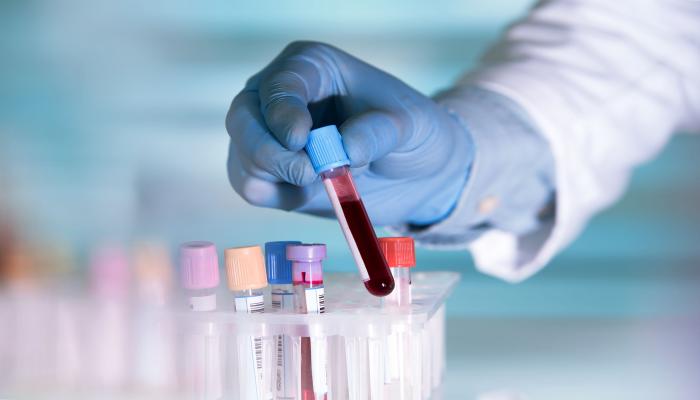建立日期 4331
主題: 什麼是aHUS 疾病?


什麼是aHUS 疾病?
aHUS 是一種基因突變造成的的遺傳性罕見疾病,它會造成身體重要器官急性損傷,例如急性腎衰竭、心肌梗塞、腦中風或失明等等。這個疾病可以發生在任何的年紀,假如不給予立即的治療,病人會有很嚴重的併發症產生,甚至可能造成病人因為器官衰竭而死亡[1,2]。aHUS 起因於補體調控因子或補體本身發生突變造成補體系統失去控制力而過度活化。補體系統是輔助人體免疫功能的一套機制,當外來物侵入人體時,會啟動補體系統、開始活化,產生發炎等反應,直到擊退外來物後,補體調控因子會調控活化的補體,恢復正常的低度活性[1-4]。
然而,aHUS 病人的補體調控因子或補體本身發生突變,造成補體系統失去控制,一直處在過度活化狀態而無法停止,使得血管內皮細胞被補體攻擊造成破壞,並使血小板活化,持續發炎進而發生血栓,最終引發細胞缺氧而損害組織,造成多重器官衰竭,甚至可能使病人因為器官衰竭而死亡[1,5-9]。
.JPG)
參考文獻:
1. Noris M, Remuzzi G. Atypical hemolytic–uremic syndrome. N Engl J Med 2009;361:1676-87.
2. Zipfel PF. Thrombotic microangiopathies:new insights and new challenges. Curr Opinion Nephrol Hypertens 2010;4:372-8.
4. Heinen S, Pluthero FG, van Eimeren VF, Quaggin SE, Licht C. Monitoring and modeling treatment of atypical hemolytic uremic syndrome. Mol Immunol 2013;54: 84-8.
5. Licht C, Pluthero FG, Ling L, et al. Platelet-associated complement factor H in healthy persons and patients with
atypical HUS. Blood 2009;114:4538-45.
6. Benz K, Amann K. Thrombotic microangiography: new insights. Curr Opin Nephrol Hypertens 2010;19:242-7.
7. Caprioli J, Noris M, Brioshi S, et al. Genetics of HUS: the impact of MCP, CFH, and IF mutations on clinical presentation, response to treatment, and outcome. Blood 2006;108:1267-79.
8. Noris M, Caprioli J, Bresin E, et al. Relative role of genetic complement abnormalities in sporadic and familial aHUS
and their impact on clinical phenotype. Clin J Am Soc Nephrol 2010;5:1844-59.
9. Loirat C, Fremeaux-Bacchi V. Atypical hemolytic uremic syndrome. Orphanet J Rare Dis 2011;6:60.
aHUS 是一種基因突變造成的的遺傳性罕見疾病,它會造成身體重要器官急性損傷,例如急性腎衰竭、心肌梗塞、腦中風或失明等等。這個疾病可以發生在任何的年紀,假如不給予立即的治療,病人會有很嚴重的併發症產生,甚至可能造成病人因為器官衰竭而死亡[1,2]。aHUS 起因於補體調控因子或補體本身發生突變造成補體系統失去控制力而過度活化。補體系統是輔助人體免疫功能的一套機制,當外來物侵入人體時,會啟動補體系統、開始活化,產生發炎等反應,直到擊退外來物後,補體調控因子會調控活化的補體,恢復正常的低度活性[1-4]。
然而,aHUS 病人的補體調控因子或補體本身發生突變,造成補體系統失去控制,一直處在過度活化狀態而無法停止,使得血管內皮細胞被補體攻擊造成破壞,並使血小板活化,持續發炎進而發生血栓,最終引發細胞缺氧而損害組織,造成多重器官衰竭,甚至可能使病人因為器官衰竭而死亡[1,5-9]。
.JPG)
參考文獻:
1. Noris M, Remuzzi G. Atypical hemolytic–uremic syndrome. N Engl J Med 2009;361:1676-87.
2. Zipfel PF. Thrombotic microangiopathies:new insights and new challenges. Curr Opinion Nephrol Hypertens 2010;4:372-8.
4. Heinen S, Pluthero FG, van Eimeren VF, Quaggin SE, Licht C. Monitoring and modeling treatment of atypical hemolytic uremic syndrome. Mol Immunol 2013;54: 84-8.
5. Licht C, Pluthero FG, Ling L, et al. Platelet-associated complement factor H in healthy persons and patients with
atypical HUS. Blood 2009;114:4538-45.
6. Benz K, Amann K. Thrombotic microangiography: new insights. Curr Opin Nephrol Hypertens 2010;19:242-7.
7. Caprioli J, Noris M, Brioshi S, et al. Genetics of HUS: the impact of MCP, CFH, and IF mutations on clinical presentation, response to treatment, and outcome. Blood 2006;108:1267-79.
8. Noris M, Caprioli J, Bresin E, et al. Relative role of genetic complement abnormalities in sporadic and familial aHUS
and their impact on clinical phenotype. Clin J Am Soc Nephrol 2010;5:1844-59.
9. Loirat C, Fremeaux-Bacchi V. Atypical hemolytic uremic syndrome. Orphanet J Rare Dis 2011;6:60.